Abstract
There is substantial scientific and public concern about the potential effects of occupational and environmental toxicants on reproductive health. These effects include impaired functioning of the reproductive systems of men and women as well as a broad spectrum of developmental problems expressed in offspring. Research on reproduction and development is among the most complex undertakings in biomedical research. This complexity is due in part to the intricate biology of reproduction, the multiple targets involved (male, female, and offspring), the uncertainties in extrapolating from animal models to humans, and the problems involved in accurately characterizing exposures and outcomes in epidemiologic investigations. However, given the relatively brief history of research into toxicant-induced reproductive health effects, we have made enormous strides in our knowledge over the past decade. In particular, recent advances in reproductive biology and biotechnology and in the development of biological markers of exposure, effect, and susceptibility are greatly enhancing our ability to study cause-effect relationships. In this paper, the Research Needs Working Group proposes ways to apply existing knowledge to better protect reproductive health and suggests directions for future research. Fulfilling this challenging agenda will require responsible cooperation by labor, industry, government, individual citizens, and the scientific community. Further research and collaboration are essential to both prevent adverse reproductive and developmental outcomes and to formulate a sound scientific basis for policy making.
Full text
PDF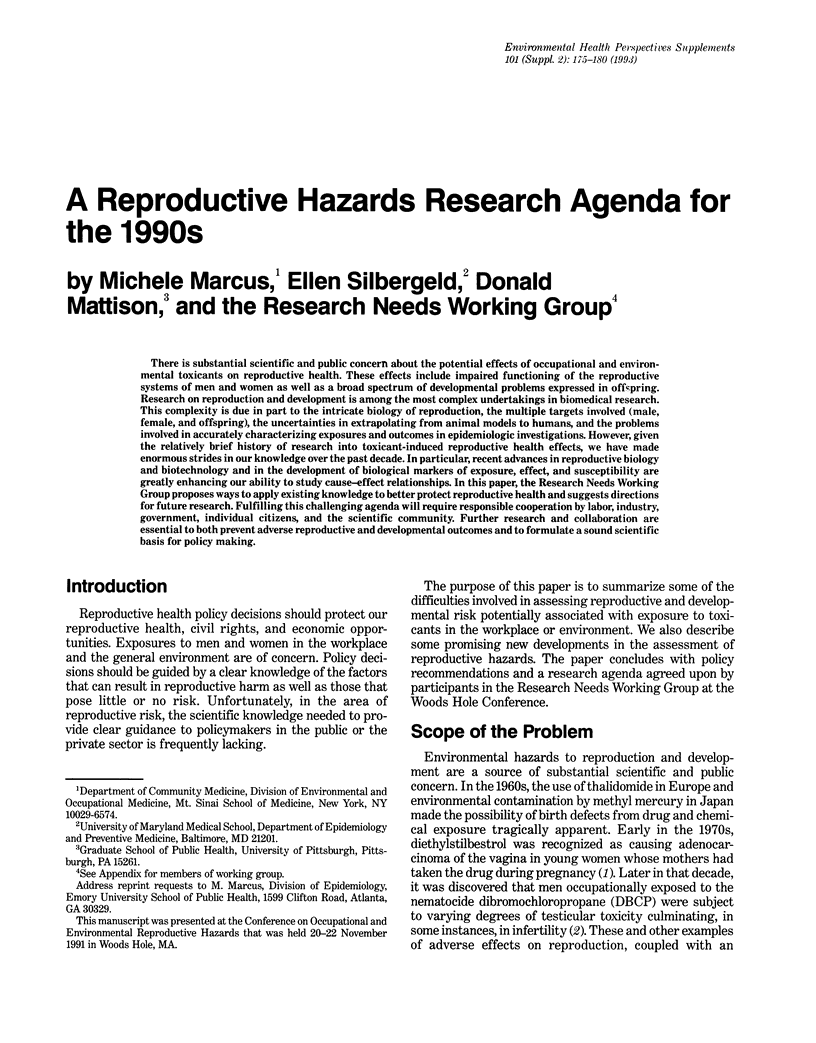
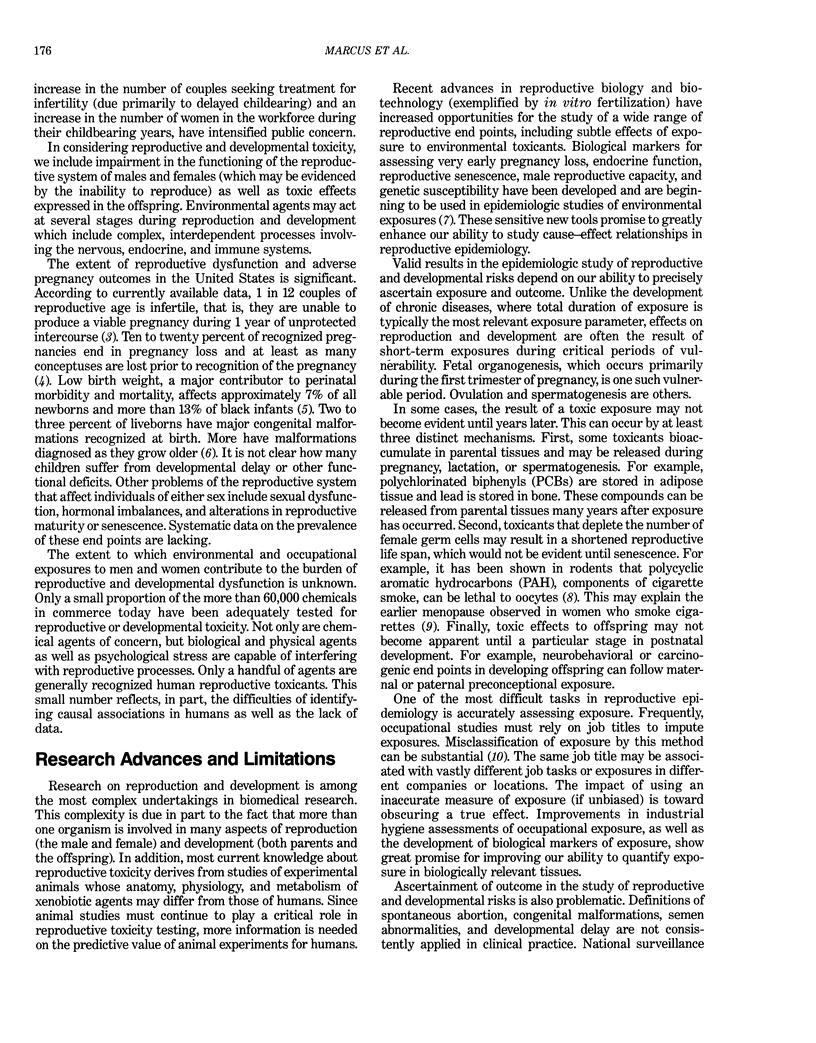
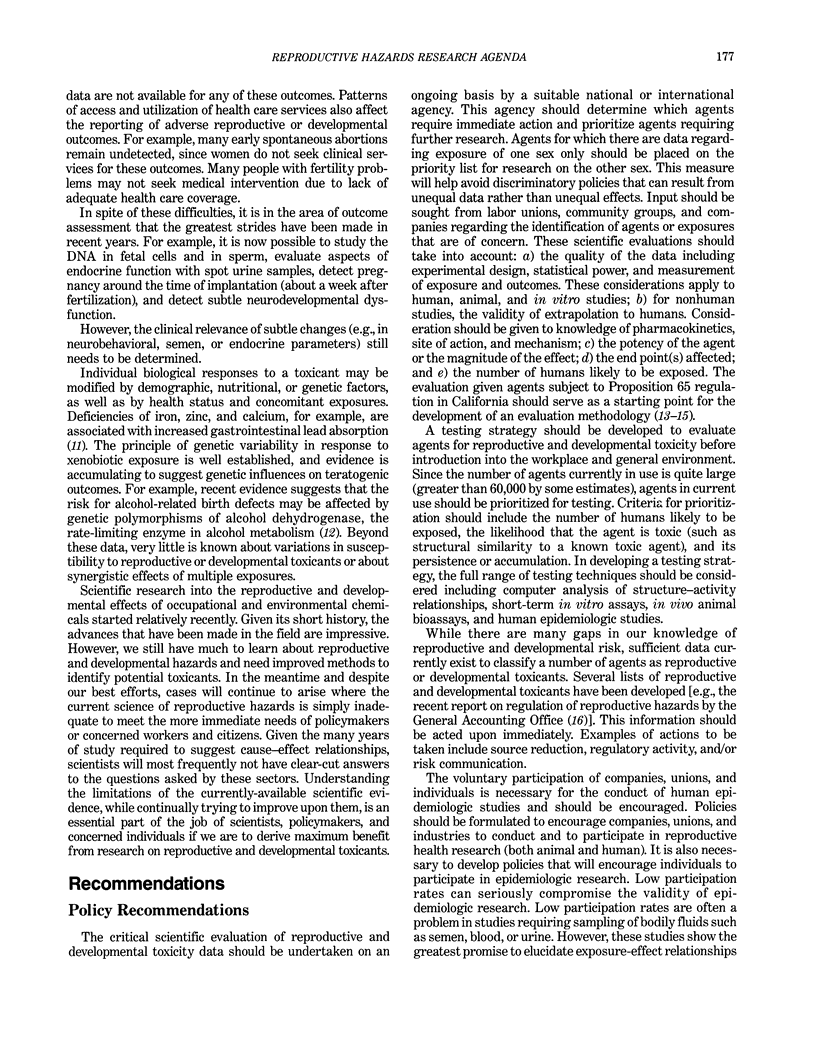
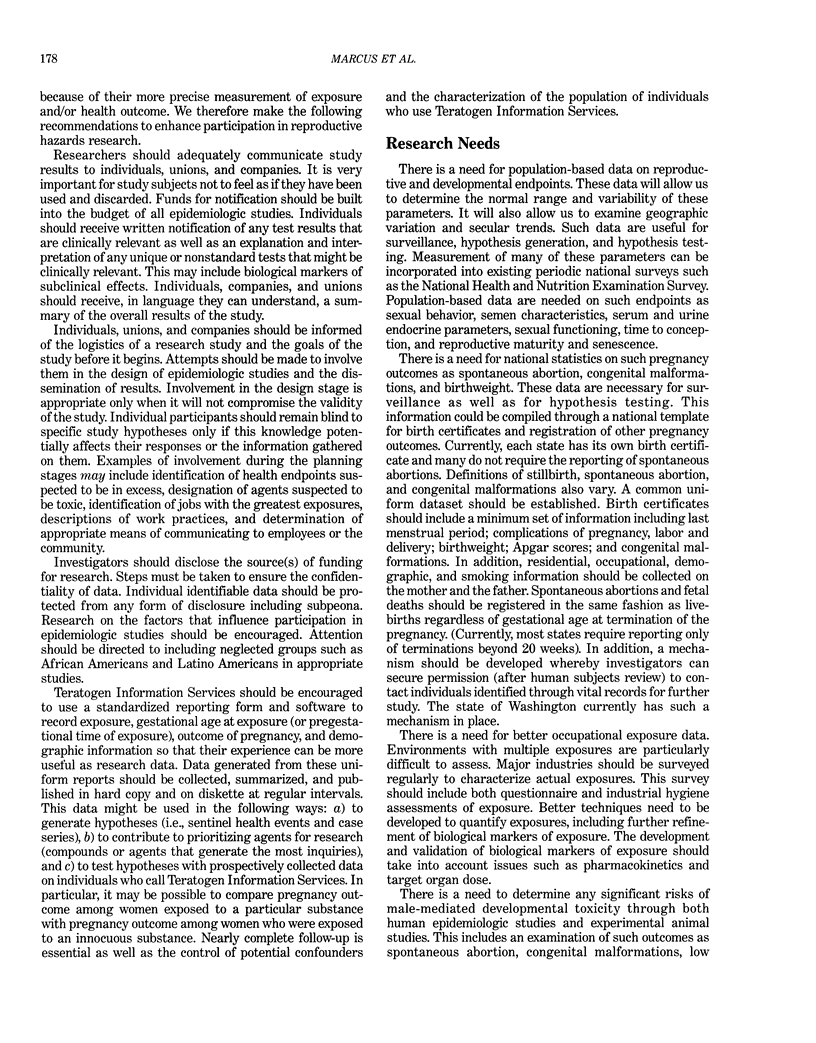
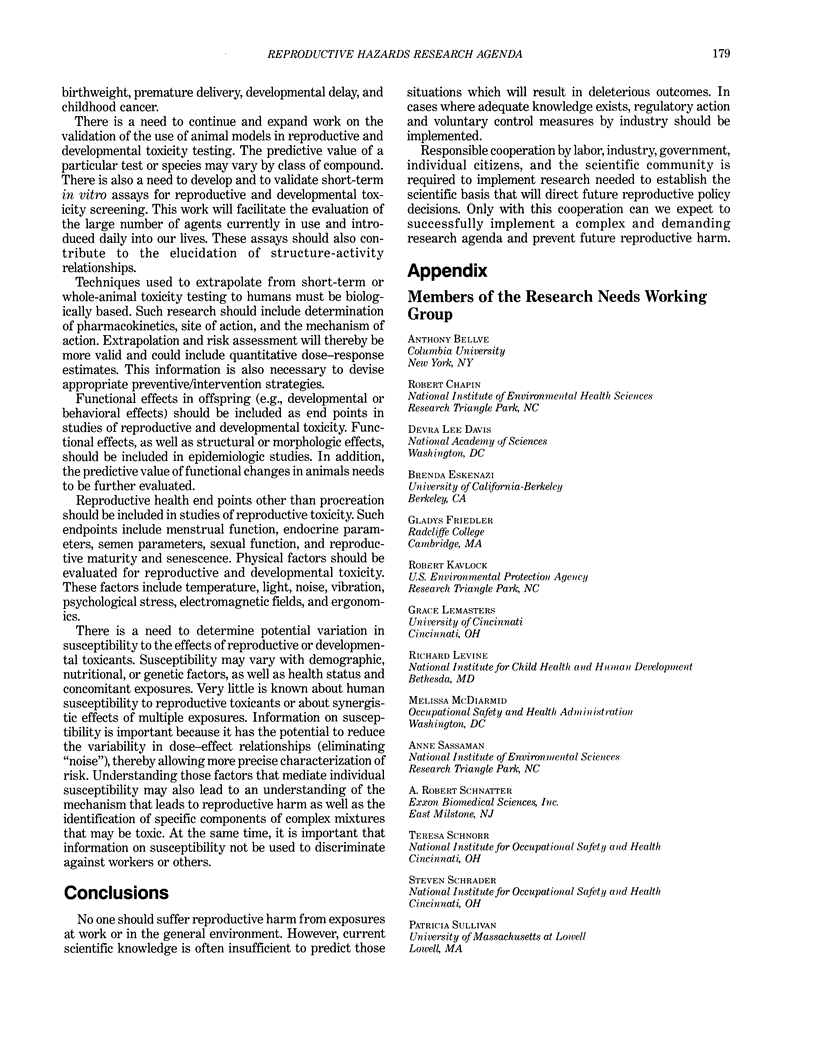
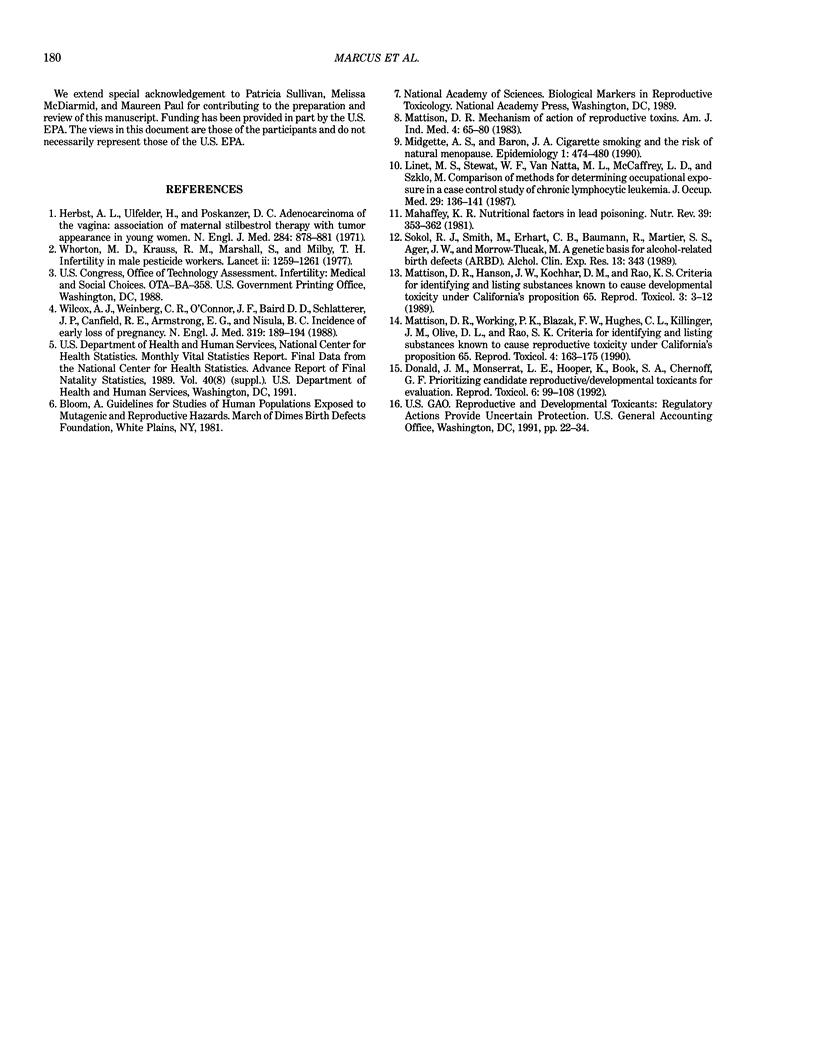
Selected References
These references are in PubMed. This may not be the complete list of references from this article.
- Donald J. M., Monserrat L. E., Hooper K., Book S. A., Chernoff G. F. Prioritizing candidate reproductive/developmental toxicants for evaluation. Reprod Toxicol. 1992;6(1):99–108. doi: 10.1016/0890-6238(92)90027-q. [DOI] [PubMed] [Google Scholar]
- Herbst A. L., Ulfelder H., Poskanzer D. C. Adenocarcinoma of the vagina. Association of maternal stilbestrol therapy with tumor appearance in young women. N Engl J Med. 1971 Apr 15;284(15):878–881. doi: 10.1056/NEJM197104222841604. [DOI] [PubMed] [Google Scholar]
- Linet M. S., Stewart W. F., Van Natta M. L., McCaffrey L. D., Szklo M. Comparison of methods for determining occupational exposure in a case-control interview study of chronic lymphocytic leukemia. J Occup Med. 1987 Feb;29(2):136–141. [PubMed] [Google Scholar]
- Mattison D. R., Hanson J. W., Kochhar D. M., Rao K. S. Criteria for identifying and listing substances known to cause developmental toxicity under California's Proposition 65. Reprod Toxicol. 1989;3(1):3–12. doi: 10.1016/0890-6238(89)90032-4. [DOI] [PubMed] [Google Scholar]
- Mattison D. R. The mechanisms of action of reproductive toxins. Am J Ind Med. 1983;4(1-2):65–79. [PubMed] [Google Scholar]
- Mattison D. R., Working P. K., Blazak W. F., Hughes C. L., Jr, Killinger J. M., Olive D. L., Rao K. S. Criteria for identifying and listing substances known to cause reproductive toxicity under California's Proposition 65. Reprod Toxicol. 1990;4(3):163–175. doi: 10.1016/0890-6238(90)90055-z. [DOI] [PubMed] [Google Scholar]
- Midgette A. S., Baron J. A. Cigarette smoking and the risk of natural menopause. Epidemiology. 1990 Nov;1(6):474–480. doi: 10.1097/00001648-199011000-00010. [DOI] [PubMed] [Google Scholar]
- Whorton D., Krauss R. M., Marshall S., Milby T. H. Infertility in male pesticide workers. Lancet. 1977 Dec 17;2(8051):1259–1261. doi: 10.1016/s0140-6736(77)92665-4. [DOI] [PubMed] [Google Scholar]
- Wilcox A. J., Weinberg C. R., O'Connor J. F., Baird D. D., Schlatterer J. P., Canfield R. E., Armstrong E. G., Nisula B. C. Incidence of early loss of pregnancy. N Engl J Med. 1988 Jul 28;319(4):189–194. doi: 10.1056/NEJM198807283190401. [DOI] [PubMed] [Google Scholar]


